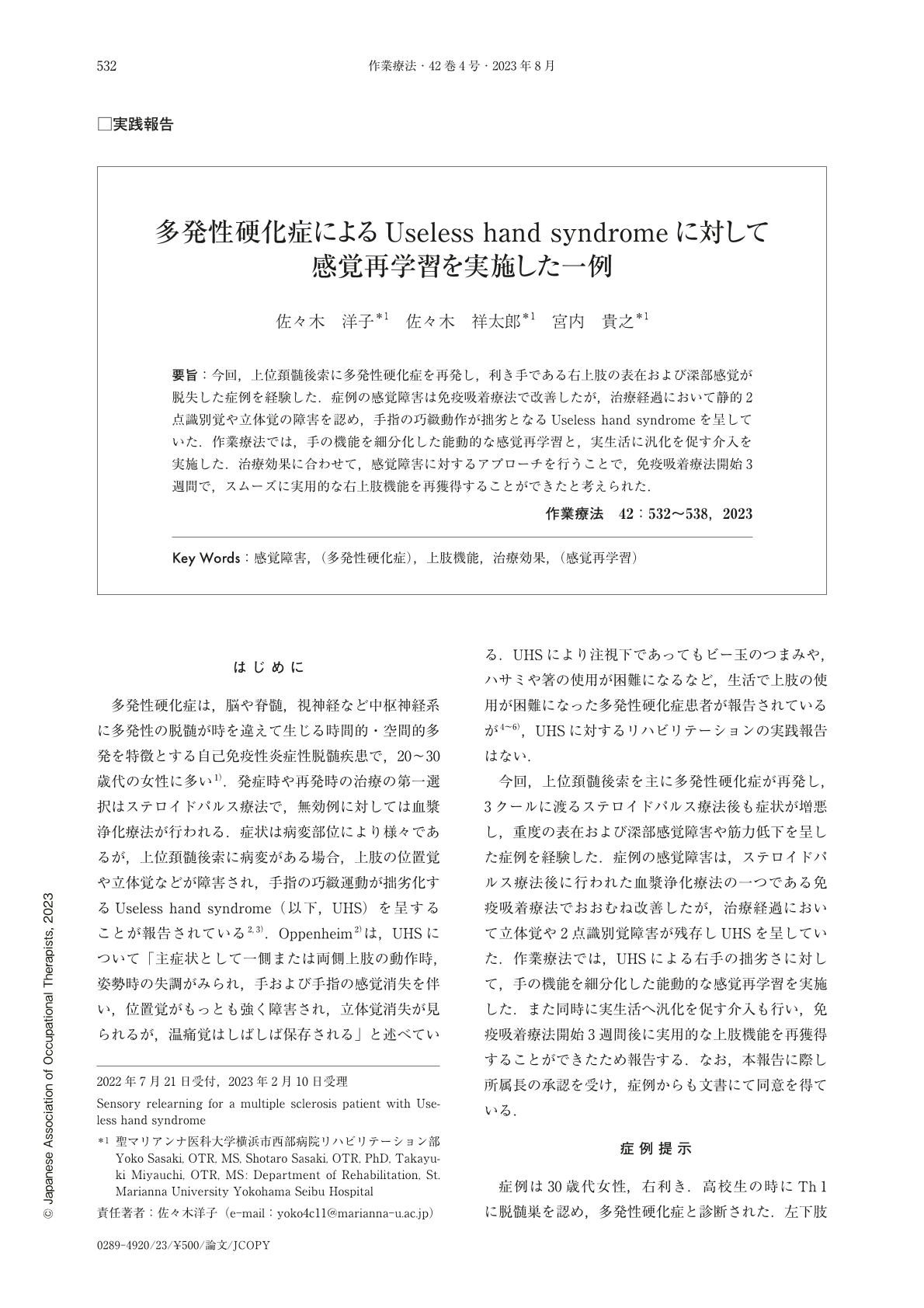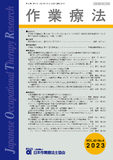Japanese
English
- 販売していません
- Abstract 文献概要
- 1ページ目 Look Inside
- 参考文献 Reference
要旨:今回,上位頚髄後索に多発性硬化症を再発し,利き手である右上肢の表在および深部感覚が脱失した症例を経験した.症例の感覚障害は免疫吸着療法で改善したが,治療経過において静的2点識別覚や立体覚の障害を認め,手指の巧緻動作が拙劣となるUseless hand syndromeを呈していた.作業療法では,手の機能を細分化した能動的な感覚再学習と,実生活に汎化を促す介入を実施した.治療効果に合わせて,感覚障害に対するアプローチを行うことで,免疫吸着療法開始3週間で,スムーズに実用的な右上肢機能を再獲得することができたと考えられた.
A multiple sclerosis patient with superficial and deep sensory loss in the right upper extremity received active sensory relearning with subdivided hand functions and interventions to encourage use of hand in real-world activities. Useless hand syndrome comprises clumsiness of complex finger movement and loss of manual dexterity. Two-point discrimination and stereognosis deficits decreased use of the right upper extremity. The right upper limb function improved and regained practical level 3 weeks after immunoadsorption therapy. This case report indicates that dealing with sensory disorders and providing therapy for Useless hand syndrome might improve upper limb function.

Copyright © 2023, Japanese Association of Occupational Therapists. All rights reserved.


